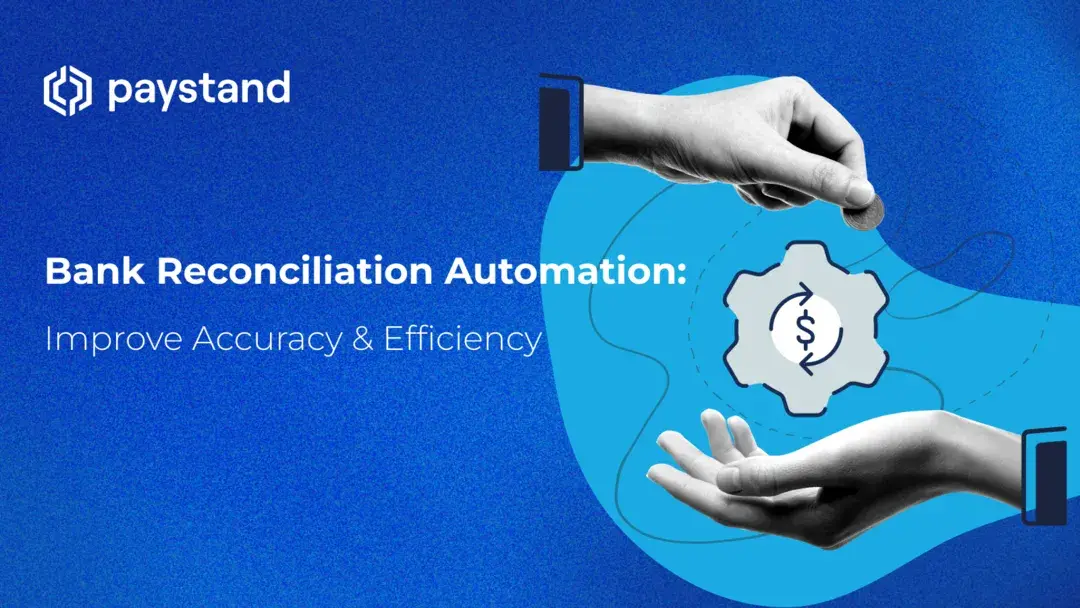Bank Reconciliation Automation: Improve Accuracy & Efficiency

Table of Contents
- Is automatic reconciliation possible?
- What is automatic reconciliation?
- Can you automate bank reconciliation?
- Bank reconciliation automation tools
- How is auto bank reconciliation better than manual?
- What are the drawbacks of automated reconciliation software?
Key Takeaways
- Bank reconciliation is essential for ensuring accuracy in a business's financial records and can be automated for efficiency.
- Automated reconciliation offers increased accuracy, time savings, efficiency, transparency, and control over financial data.
- AI-powered solutions enhance bank reconciliation by automating data entry, transaction matching, and reporting.
- Automated bank reconciliation is faster, more accurate, and scalable compared to manual processes.
- Drawbacks of automated reconciliation include initial setup costs, complexity, dependence on technology, and the need for accurate data.
Bank reconciliation is a crucial part of any business's financial management process. It involves matching a company's financial records with bank statements to ensure accuracy and consistency. With technological advancements, many businesses are turning to bank reconciliation automation to streamline this process.
This article addresses questions about automated bank reconciliation, shedding light on its advantages, potential disadvantages, and the tools available for its implementation.
Is Automatic Reconciliation Possible?
Yes, automatic reconciliation is possible and widely adopted across industries. Financial software can help businesses automate the reconciliation process, making it more efficient and less error-prone. By setting up specific rules and criteria, these solutions can match transactions accurately, flagging any discrepancies that require further investigation.
What is Automatic Reconciliation?
Automatic reconciliation is a process that uses technology to automate the comparison of two or more sets of data to identify discrepancies or differences. It is used in accounting, finance, and other industries to simplify accounts receivable processes.
How Does Automatic Reconciliation Work?
Automatic reconciliation typically involves the following steps:
-
Data collection: Gather relevant data sets for reconciliation, such as financial transactions, statements, invoices, and purchase orders.
-
Data cleansing: Clean data before reconciliation to ensure accuracy and reliability.
-
Data matching: Match data sets based on common identifiers using algorithms like exact matching, fuzzy matching, or AI.
-
Discrepancy identification: The system compares data values for discrepancies like mismatched amounts, missing transactions, or incorrect account balances.
-
Resolution: Resolve discrepancies by investigating causes, correcting errors, or adjusting data.
Benefits of Automatic Reconciliation
Automatic reconciliation offers several benefits over manual reconciliation processes, including:
-
Accuracy: Automation reduces the risk of human errors, leading to more accurate and reliable reconciliation results.
-
Time Savings: Businesses can save time spent on manual reconciliation tasks.
-
Efficiency: Automatic reconciliation can process large volumes of data quickly and efficiently, making it ideal for organizations with complex financial operations.
-
Transparency: The automated process provides a clear audit trail, making tracking and reviewing reconciliation activities easier.
-
Control: Automatic reconciliation helps organizations better control their financial data and processes, reducing the risk of fraud and financial misstatement.
Can You Automate Bank Reconciliation?
Yes, bank reconciliation can be automated using specialized software. These tools connect to your bank accounts, automatically import transactions, and match them with your internal financial records.
Automation reduces the need for manual intervention, making the process faster and more accurate. The software can automatically connect to your bank accounts, import transactions, and match them with your internal financial records. This eliminates the need to enter data manually, which can lead to errors.
Bank Reconciliation Automation Tools
Bank reconciliation automation tools, powered by AI, ML, and RPA, streamline reconciling bank statements with accounting records. These tools offer key features such as data extraction and aggregation, transaction matching, and reporting and analytics.
Bank reconciliation automation tools revolutionize financial processes, enabling businesses to focus on strategic activities and make informed decisions.
Which Software is Used for Bank Reconciliation?
Several software solutions are available for automated bank reconciliation, each offering different features to cater to various business needs. Some popular options include:
- Acumatica: A widely used accounting software that offers automated bank reconciliation features.
- Xero: Known for its user-friendly interface, Xero provides bank reconciliation as part of its accounting software suite.
- Sage Intacct: A cloud-based financial management solution with automated bank reconciliation capabilities.
- NetSuite: Offers comprehensive financial management tools, including automated bank reconciliation.
- SAP Concur: Specializes in expense management and offers automated bank reconciliation as part of its services.
Can AI Do Bank Reconciliation
Artificial intelligence can revolutionize many aspects of business and finance, including bank reconciliation. AI-powered solutions can automate and streamline reconciliation, saving time and money and helping the process with:
- Data entry
- Matching transactions
- Identifying patterns
- Reporting
AI is increasingly being integrated into bank reconciliation processes. This enhances reconciliation efficiency by handling large data volumes and reducing manual oversight.
How is Auto Bank Reconciliation Better Than Manual?
Automated bank reconciliation offers many advantages that make it superior to manual reconciliation; among them, we can find:
- Speed: By streamlining reconciliation, automation frees businesses for other tasks.
- Accuracy: Automated systems reduce human error, ensuring accurate financial records.
- Consistency: Streamlined reconciliation minimizes transaction oversight risk.
- Scalability: Automated systems efficiently manage large transactions, ideal for expanding businesses.
The Profit Paradigm Podcast
We're flipping the script on finance. No fees. No friction. Just pure cash-flow power. If you're ready to automate, accelerate, and take control of your revenue, this is where the future of money movement begins.
What are the Drawbacks of Automated Reconciliation Software?
Automated reconciliation software offers many advantages, but it also comes with drawbacks that should be considered. Here are some to keep in mind:
- Initial setup costs: Implementing automated reconciliation software can require a substantial initial investment, including software purchase, system integration, and staff training.
- Complexity: Software setup may be challenging for businesses with unique financial structures.
- Data accuracy: Automation reduces errors but requires accurate data to avoid reconciliation issues.
- Dependence on technology: Technical issues or downtime may delay business reconciliation.
Bank reconciliation automation is a step toward more efficient financial management. However, you can do more to stay ahead.
Learn how to transform your financial operations with our free ebook, "Why B2B Companies Need to Adopt Blockchain Payments." This guide will provide insights into the benefits of blockchain, including enhanced security, faster transactions, and improved transparency. Don't miss out on the future of finance—download your copy today!





